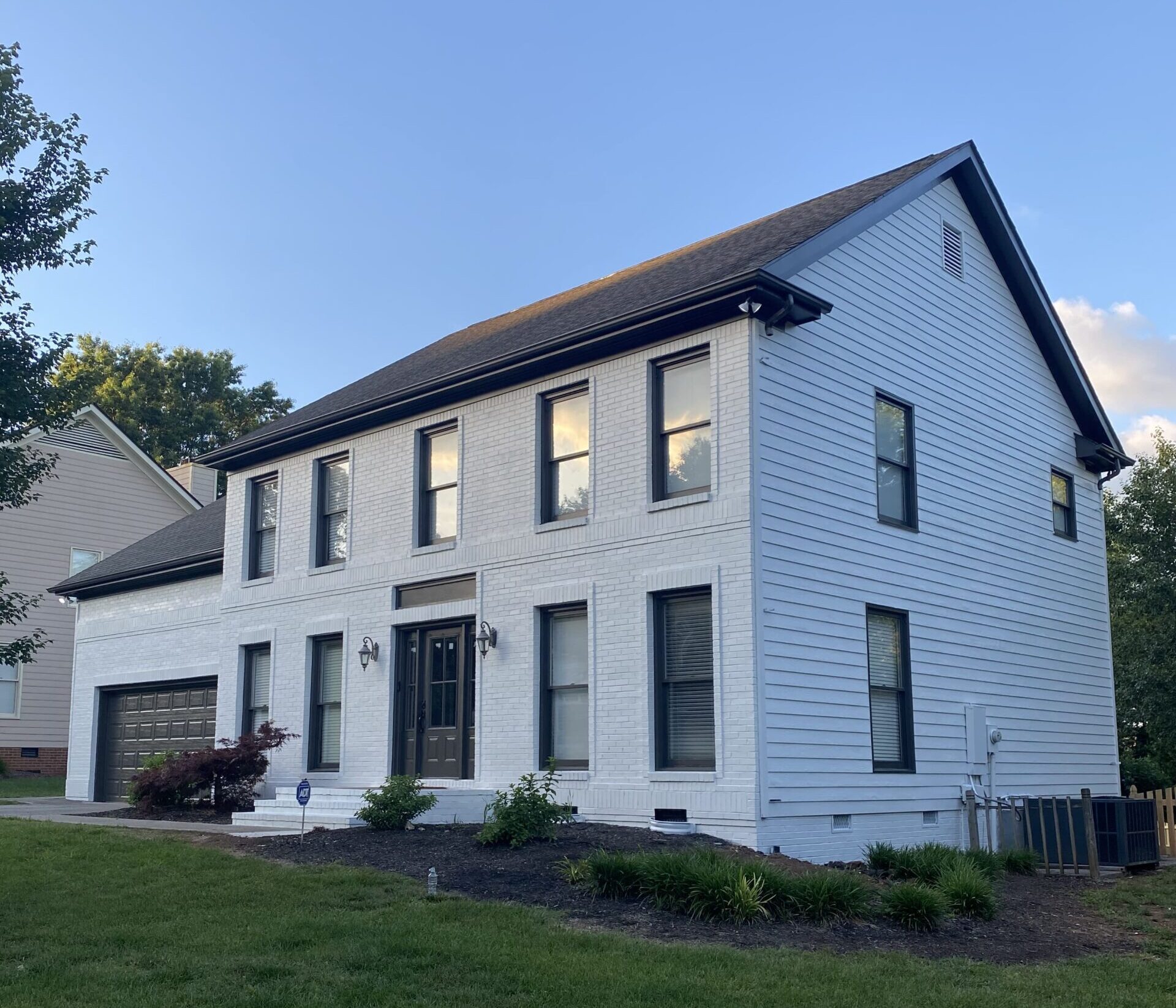A Guide to Painting Brick: All You Need to Know

As a professional painter, tackling exterior brick painting requires precision, attention to detail, and the right techniques to achieve a flawless finish. In this comprehensive guide, we’ll walk you through each step of the process to ensure your brick exterior receives a stunning makeover that stands the test of time.
1. Pressure Washing:
Before diving into painting, it’s crucial to prep the surface by pressure washing the exterior brick. This step removes dirt, mold, mildew, and any other contaminants that may affect paint adhesion. Utilize professional outdoor cleaners and equipment to ensure thorough cleaning without causing damage to the brick.
2. Masking:
To avoid unwanted paint on windows, doors, gutters, and other non-brick surfaces, thorough masking is essential. Take your time to mask off the entire work area meticulously using painter’s tape and plastic sheeting. This step ensures clean, crisp lines and a professional finish.
3. Start Spraying Paint:
Not all paints are suitable for exterior brick painting. Choose a high-quality paint specifically formulated for masonry surfaces. Spraying on the paint can expedite the application process, but it’s crucial to select the right type of paint to ensure smooth application and longevity of your brick’s lifespan.
4.Back Rolling:
While spraying paint onto the brick may speed up the process, painting brick requires additional effort to ensure thorough coverage. Back rolling involves using a roller to push the paint into the porous surface of the brick, ensuring an even coat and maximum adhesion. This step is crucial for achieving a professional-looking finish.
5. Clean Up:
Once the painting is complete, proper clean-up is essential to leave behind a tidy work area. Remove all plastic sheeting and painter’s tape carefully to avoid damaging the freshly painted surfaces. Thoroughly clean any tools and equipment used during the painting process to maintain their longevity and performance.
6. Touching Up:
Take your time to inspect the painted surface for any missed spots or imperfections. Use a small brush or roller to touch up any areas that may require additional paint. Attention to detail during this final step ensures a flawless finish and customer satisfaction.
In conclusion, exterior brick painting requires careful preparation, the right materials, and proper technique to achieve professional results. By following these steps and investing the necessary time and effort, you can transform the look of your home’s exterior and enhance its curb appeal for years to come.
Related Posts
How to Tell If Your Home’s Siding Needs to Be Replaced
Siding exteriors are the single most important barrier between your home’s interior and the exterior elements, maintaining energy efficiency, and
Hiring Professional Painters vs. DIY Exterior Painting: Pros and Cons
When it comes to giving your home a fresh, new look, few things make as big of an impact as
